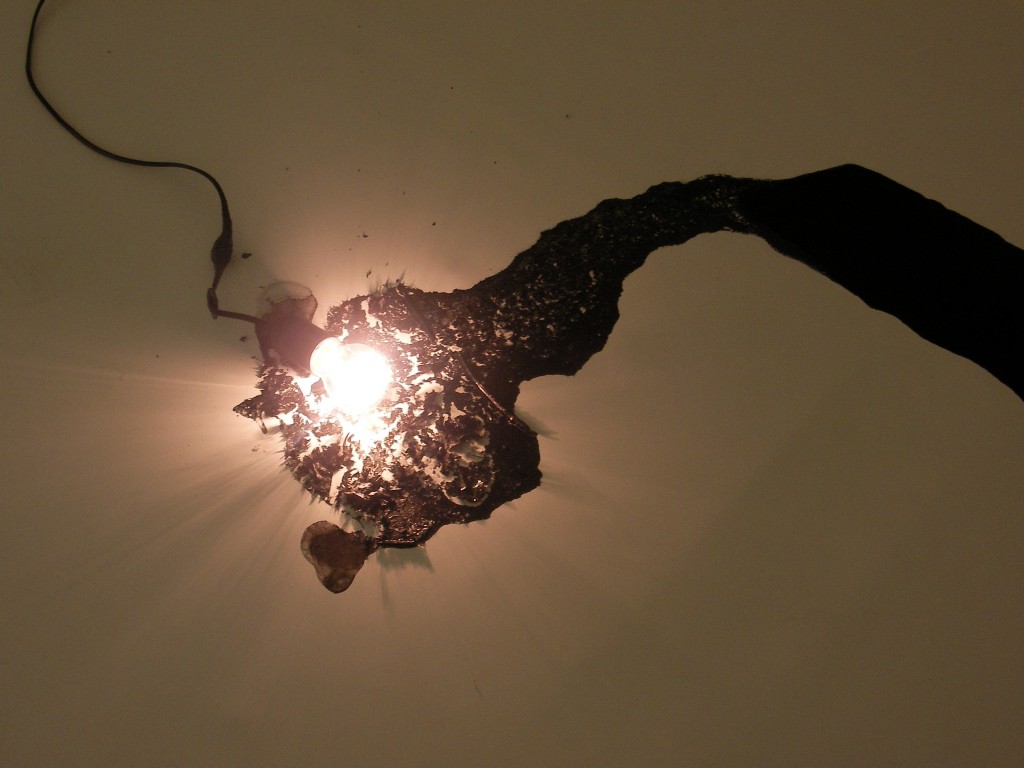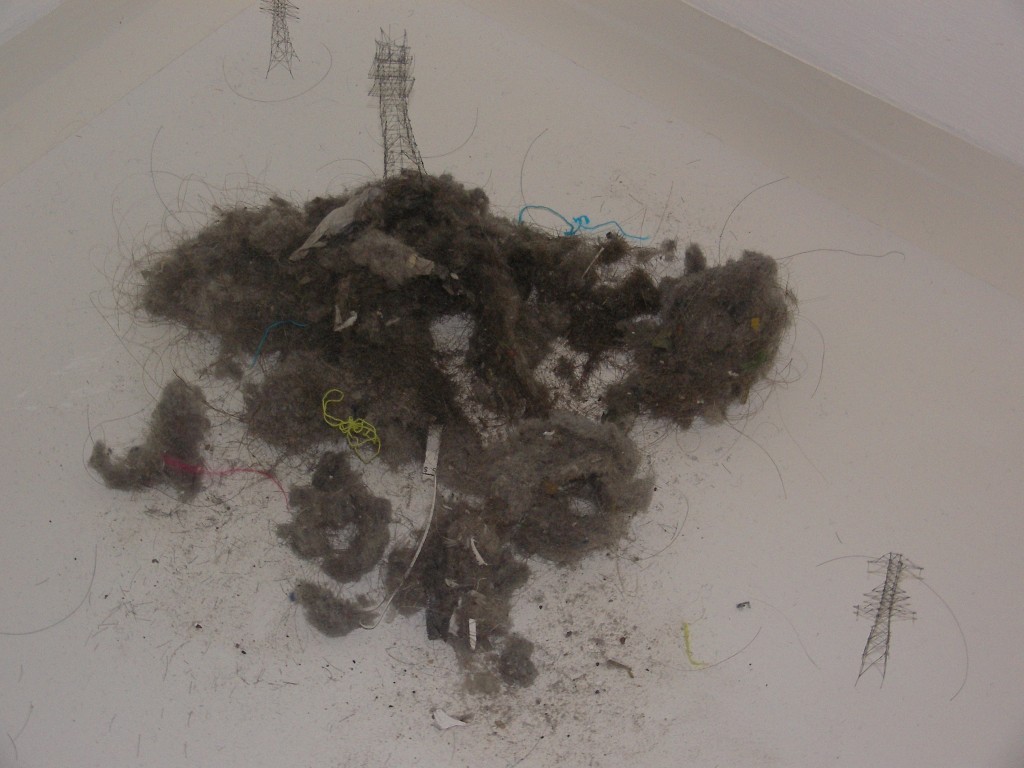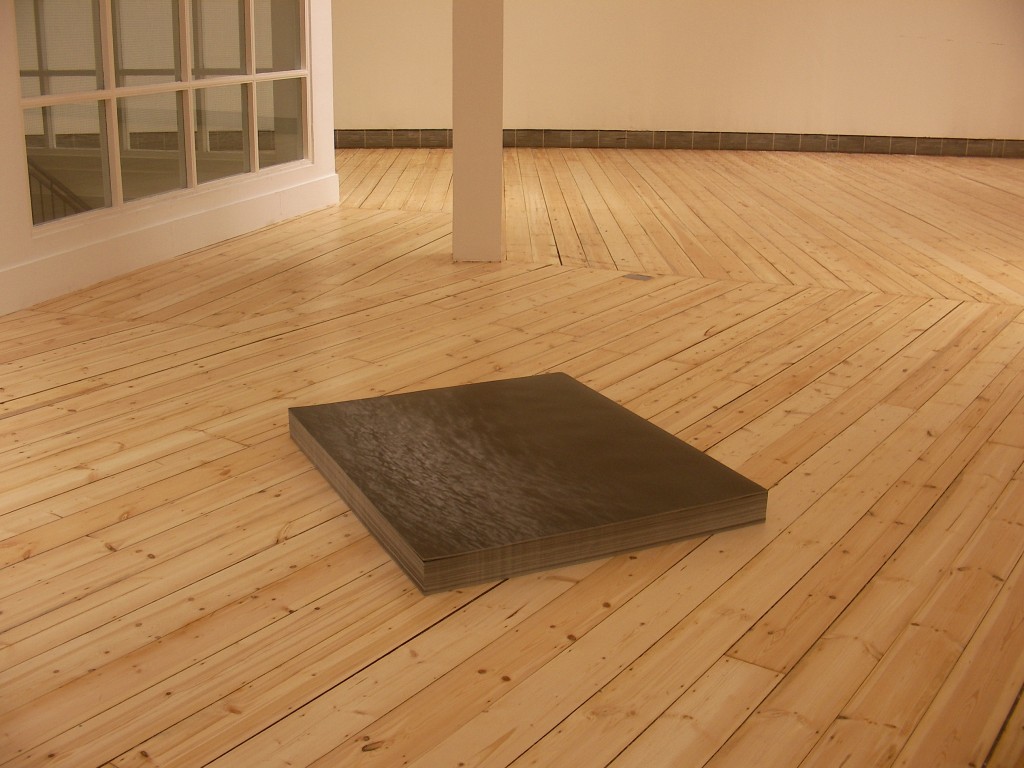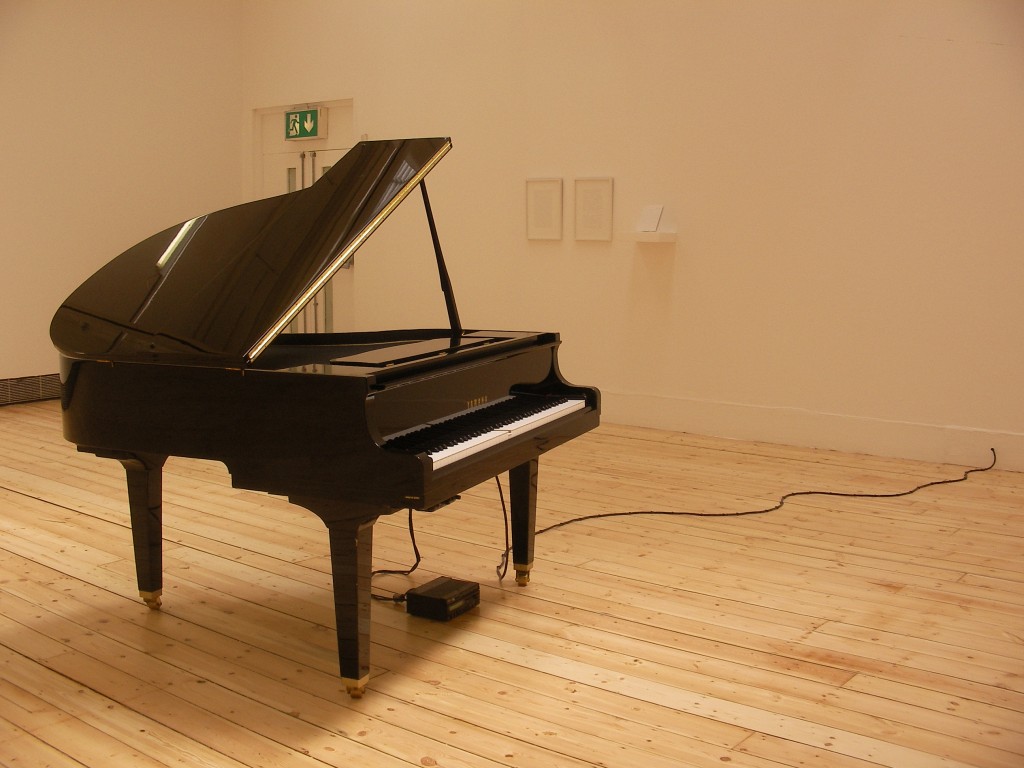
I’m delighted to announce the successful launch of Constellations, an exhibition co-curated by myself and Karen Gaskill, at Cornerhouse in Manchester, UK.
Constellations presents four international artists working with sculpture and installation. Minimalist in their approach, all present ideas on remoteness, fragility, disintegration, melancholy, and transience, together creating a profound and almost palatable sadness.
Adopting its title from the patterns of celestial bodies, the exhibition considers the relationship between ideas and the formation of concept. Drawing on the historic usage of constellations as maps or event atlases of the celestial sphere, this exhibition presents a collection of ideas on ephemerality, impermanence and flux in contemporary art. At its very core is an organic grouping of works that when in relation to one another form new ideas and notions, new constellations, each as fluid and volatile as the other.
The works selected are concerned with the fragility and breakdown of content. This instability not only manifests as a dissolution or reduction, but also as a loss of content, a shift in form, or the temporality of an objects’ existence. Each metaphorically deals with the passage of time, creating its own duration, but ultimately brings the attention back to the present moment. The result is an exhibition that in structure and content is all at once timeless, durational and unstable.
The shift from one form to another is most apparent in the ice lamps of Kitty Kraus (pictured above), household lightbulbs are encased in ice infused with ink, resembling small frosty black cubes, which when plugged in cause the ice to melt haphazardly across the floor. The initial sculpture draws murky trails with inky stained water, leaving the often broken lightbulb and its cable trailing, a testament to its ultimate demise.
Surrounded by the slow dissolution of Kraus’s lonely systems, the delicate landscapes of Takahiro Iwasaki (pictured below) respond in their fragile yet resilient form. The mimicry of permanent geographies such as mountain ranges, using delicate and unstable materials such as cloth and pencil lead, create a contrasting, yet equally delicate infrastructure, reminding us quietly about the fleetingness of time and earth’s instability.

The reduction of form is mirrored in the takeaway poster stacks of Felix Gonzalez-Torres (pictured below). Durational in nature, the work slowly diminishes, shifting in form as the audience remove the posters and the tangible aspect of the work disappears. The work is evocative of what once was, of death and passing, and the image of the sea on the posters also invokes a sense of timelessness and strength to contrast the melancholy of the diminishing pile.

Katie Paterson’s two works both deal with space and the universe, and our position as humans in the cosmos is revealed by the works. 100 Billion Suns is a daily colourful explosion of confetti, happening in different parts of the Cornerhouse building each day. Each piece of confetti bears the colour signature of the brightest explosions in the universe. She has shrunk massive events to human scale, and presented them in bursts that will land and be tracked throughout the gallery in unpredictable ways. Earth-Moon-Earth (Moonlight Sonata Reflected from the Surface of the Moon) on the other hand, is a work that transforms Beethoven’s Moonlight Sonata using radio waves (pictured below). By bouncing Morse code of the score off of the moon’s surface, errors are created that are reproduced in the version played by the piano in the gallery. The lost information in the score is as a result of some celestial interference, a chance intervention that is not unlike the chance vagaries of the room temperature and floor surface that will impact the final form of Kitty Kraus’ ice lamp works.

The works in this exhibition each work in different ways with form, material, and change. Katie Paterson’s confetti canons are an addition to the environment, while viewers slowly subtract Gonzalez-Torres’ work from the gallery. Kraus’ ice lamps physically transform from 3D to 2D, while Iwasaki’s work plays with scale and form by transforming the idea of a mountain into household materials. The radio waves that Paterson used to send the Moonlight Sonata to the moon and back echo the ocean waves represented on the Gonzalez-Torres poster. Natural materials such as ice, water, soil, and air are present in all the works in either representation or in physical form. The pieces here may be minimal in aesthetic, but they are not abstract, they represent real things, and changes in the real world.
When devising constellations in the sky, people created stories to help understand our natural world, to make sense of it. But these celestial drawings are ultimately arbitrary, fragile, and could be replaced by new mappings or new understandings at any time. The mutability of the works in this exhibition are like the fragile understanding enabled by a constellations’ path. We are drawing edges around materials that we wish to know and to contain, even if ultimately, we cannot. The works in this exhibition provide us with a new poetic template to think about our understanding of time and material.
More info on the show:
Cornerhouse
Sat 25 Jun 2011 – Sun 11 Sep 2011
Mon – Closed, Tue – Sat 12:00 – 20:00, Sun 12:00 – 18:00